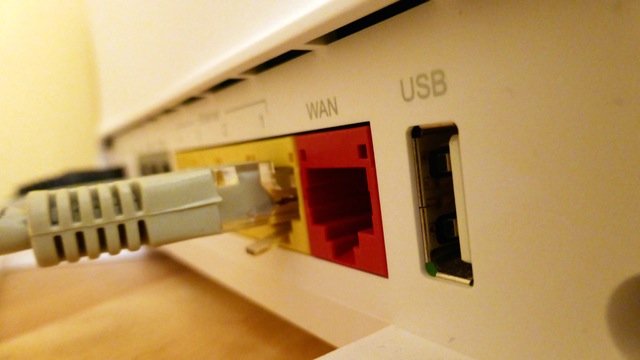Some of the world’s biggest high-tech companies have already built server farms in the Arctic. It turns out chilly temperatures are sometimes an asset, writes the High North News.
Source: Broadband Internet May Be Key to the Arctic’s Economic Future — Arctic Deeply
Some of the world’s biggest high-tech companies have already built server farms in the Arctic. It turns out chilly temperatures are sometimes an asset, writes the High North News.
| WRITTEN BYStefan Steinicke, Andreas Raspotnik | PUBLISHED ON | READ TIMEApprox. 6 minutes |

BELIEVE IT OR not, the Arctic’s economic future will be driven by global digitalization. In this context, cold temperatures are one of the Arctic’s most valuable natural resources.
Its location at the top of the world gives the region an additional competitive advantage in this new era of digital connectivity. From this, a key question arises: Could the circumpolar North eventually become a key digital pillar of the global economy?
The technological advances of the last two decades have irrevocably changed our understanding of space, time and distance and consequently have redefined globalization. Due to the rise of global supply chains of goods, services, ideas, people and data, the world economy is more connected now than ever before. Between the years 2005 and 2012, global online traffic across borders grew 18-fold – a figure that continues to surge at an exponential rate. Today, 12 percent of the global goods trade is conducted via international e-commerce. Considering our daily exposure to digital marketplaces such as Amazon, eBay or Alibaba, this number is expected to grow even faster.
Connect the Dots
A key factor for expanding global economic connectivity is its underlying digital infrastructure. The mobile internet, the Internet of Things and cloud applications are among some of the most disruptive digital technologies – technologies that will only further transform our daily life, social interactions and business activities.
Today, more than 1.1 billion people use mobile internet devices. Yet in the coming decade we will see an additional 2 to 3 billion users entering the connected mobile world. Additionally, the Internet of Things will exponentially contribute to global data flows. With 9 billion devices currently connected to the internet, estimates on the number of devices connected by 2025 range from 50 billion to 1 trillion. Numbers like that are almost inconceivable. Presumably, cloud-delivered or -enabled applications will be the digital facilitator for an extraordinary rise of globally connected devices.
The Need for Upgraded Regional Infrastructure: Why the Arctic?
In order to fulfill its potential, the digital economy depends on the physical infrastructure that makes digital flows possible in the first place. Most importantly, digital flows rely on server farms and fiber-optic cables. And the demand for both of them is going to rise dramatically. Between 2016 and 2020, the global fiber-optics market is expected to grow by 9.5 percent. The global data center construction market should increase from $14.6 billion to $22.7 billion – an annual growth rate of 9.3 percent. This expanding market will, in turn, need more energy. Today data centers areresponsible for 2 percent of global power demand. Expect this number to rise.
And this is where the Arctic comes into play, as the circumpolar North holds both a climatological and a geographical competitive advantage.
Even though the Arctic region is warming twice as fast as the rest of the globe, it is still one of the coldest spots on Earth. And the colder it is, the less energy is needed to cool down data centers, while the remaining energy demand can potentially be met using renewable energy sources(for example, hydro power, wind farms). Energy is one of the key variables when discussing the future of data centers. The amount of energy consumed by the world’s data centers is about to treble in the coming decade with, for example, Japan consuming its entire electricity supply by 2030, only for its data centers, if related growth continues at today’s rate.
Some of the biggest IT companies have already discovered the Arctic and its sub-Arctic neighborhood. In 2013, Facebook opened its “clean and green Arctic data center” in Lulea, Sweden, with Google already having started to rebuild an old paper mill in Hamina, Finland, back in 2009. Recently, Iceland and north Norway have also begun to lure data center companies with cold outside temperatures and cheap, clean and renewable energy.
According to the Data Center Risk Index 2016, the Arctic region has the lowest-risk environment for data centers. Assessing criteria such as energy costs, corporation tax, internet bandwidth, natural disaster, energy security or political stability, the index ranked Iceland (1), Norway (2), Finland (4) and Sweden (5) in its top five, followed by Canada (6) and the United States (10).
Yet data centers will not remain the only form of innovation to enter the Arctic arena. Fiber-optic cable projects are currently underway to better connect North America, Europe and Asia, aiming to use the Arctic Ocean as a profitable shortcut. These new digital highways allow for faster and shorter connections between stock exchange traders in London and Tokyo, with the potential to save 24 milliseconds in internet transmission speed. A shorter delay could give stock traders a competitive advantage as speed matters in financial markets. Moreover, upgraded digital highways are a basic prerequisite for better competitiveness in today’s digital economy. Consequently, Arctic countries invest in digital links to their European neighbors. A new northern digital highway between Finland and Germany should act as a stimulus for Finland’s vision of itself as an “icy-ideal” location for data centers.
Regional Beneficiaries
Intra-regionally, an extended fiber-optic cable system – or an extended broadband infrastructure, as such – could also enable better digital connectivity for Arctic communities, offering affordable high-speed internet connections to remote communities in the various different regions of the Arctic. Related benefits could range from upgraded healthcare support or social services (for example, telehealth services) to online education and tutoring (for example, massive open online courses) to an overall easier access to the global economy. The latter could, for instance, further accelerate digital entrepreneurship in the circumpolar North. The matter of government participation and related community involvement could also potentially be strengthened and give a fresh impetus to North-South relationships.
Yet, the various Arctic regions need to digitally catch up, as recently suggested in the Arctic Broadband Report, published by the Arctic Economic Council. The report noted that the various Arctic regions could (again) be left behind if not promoting intra- and extra-regional connectivity.
The Way Ahead
Technology, technological advancements and inventions have for centuries been a driving factor in the reshaping of societies and economies around the world. Over the last decades, information technology has manifested itself as the powerhouse in the process of globalization. The global village has become an undeniable reality and terms such as “big data” or “the cloud” part of common parlance in discussions on future global economic considerations and developments. The effects of globalization have also reached the Arctic region and will increasingly continue to integrate our most northern area into the global economic system over the years to come.
However, the Arctic and its residents should not only be a recipient of globalization but also essentially manifest itself as a new “suburb” of the global village, forming an important part of the world’s technology – and internet-based (“critical”) infrastructure. Digital connectivity has the potential to overcome some of the geographical obstacles and the ability to fully integrate the Arctic and its citizens into the global economic opportunities of the 21st century. It could offer the possibility for Arctic entrepreneurship and related startups to displace incumbent companies and have an impact beyond the regional sphere.
Yet, this “golden digital” future comes with far-reaching challenges. Security-related questions concerning cybercrime or private data protection are not going to spare the Arctic. Nevertheless, could future “Arctic exceptionalism” eventually be defined in digital terms? Could the circumpolar North become a safe digital harbor that is simultaneously beneficial to the region and its communities, to businesses and local/regional development and to the environment – and effectively tackle urgent questions of data security and the protection of our digital privacy?
Over the last decade the Arctic’s future has been envisioned from many angles. Some have been proven true, some have been caught up by reality. Will digitalization eventually symbolize/denote the region’s new economic reality?
This article originally appeared in the High North News. It is reprinted here with permission.
Never miss an update. Sign up here for our Arctic Deeply newsletter to receive weekly updates, special reports and featured insights on one of the most critical issues of our time.



